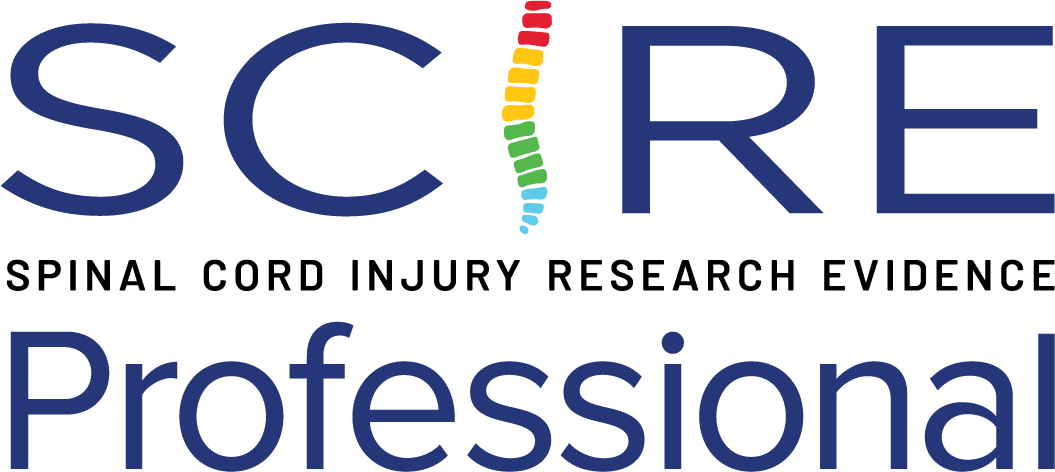- The Québec User Evaluation of Satisfaction with Assistive Technology (QUEST) is a self-report or interview-based scale, designed to evaluate a person’s satisfaction with a wide range of assistive technology.
- The current version (ver. 2.0) covers satisfaction with both the device, and with the service from the vendor/manufacturer.
Clinical Considerations
This tool is a lengthy instrument that likely takes considerable time to administer.
ICF Domain
Environmental Factors ▶ Products and Technology
Administration
- Can be interview-administered or self-reported
- The items in the 3 domains are grouped into 9 sub-scores
Number of Items
12
Equipment
N/A
Scoring
- Participants are asked to rate their satisfaction for the device on a five-point scale that ranges from “not satisfied” at all to “very satisfied”
- Finally, participants are asked to choose the three most important items related to the assistive device in question
Languages
English, Greek, Chinese, Korean, and Taiwanese.
Training Required
None.
Availability
Can be found in the appendix of the following article: https://pubmed.ncbi.nlm.nih.gov/11508406/
# of studies reporting psychometric properties: 6
Interpretability
MCID: not established in SCI population
SEM: not established in SCI population
MDC: not established in SCI population
Typical Values:
- Mean (SD) Scores:
Device Total = 4.1 (0.9)
Services Total = 3.8 (1.1)
Total = 3.99 (1.0)
(Bergstrom & Samuelsson 2006; n=124; 89 males, 35 females; community living, manual wheelchair users)
Reliability – Moderate to High
- Moderate to High for Internal Consistency:
Cronbach alpha = 0.75 to 0.90
(Greek QUEST; Koumpouros et al. 2016; n=115; 51 males; mean (SD) age: 62.45 (19.29) years, Injury not specified)
(Taiwanese QUEST; Mao et al. 2015; n=105; 79 males; 73 SCI; mean (SD) device use duration: 3.3 (2.2) years; mixed assistive devices)
(Korean QUEST; Hwang et al. 2015; n=70; 55 males; ASIA A-D; 29 complete and 41 incomplete; mean (SD) time since injury: 31.1 (58.6) years, mixed assistive devices)
- High Intra-rater Reliability:
ICC = 0.855
(Korean QUEST; Hwang et al. 2015; n=70; 55 males; ASIA A-D; 29 complete and 41 incomplete; mean (SD) time since injury: 31.1 (58.6) years, mixed assistive devices)
- High Test-Retest Reliability:
ICC = 0.95
(Greek QUEST; Koumpouros et al. 2016; n=115; 51 males; mean (SD) age: 62.45 (19.29) years, Injury not specified)
Validity – Moderate to High
- Moderate correlation between QUEST-Device subscale and Hong Kong WHO Quality of Life – BREF:
Correlation = 0.344-0.567
(Chinese QUEST; Chan & Chan 2006; n=31, 25 males, tetraplegia and paraplegia; mean (SD) time since injury = 3.79 (3.72) years; manual and power wheelchair users)
- High intercorrelations for all subscale item pairings:
Safe Use = 0.691-0.794
Fit to Use = 0.615-0.829
Endurance = 0.635-0.909
(Greek QUEST; Koumpouros et al. 2016; n=115; 51 males; mean (SD) age: 62.45 (19.29) years, Injury not specified)
Responsiveness
No values were reported for the responsiveness of the QUEST 2.0 for the SCI population.
Floor/Ceiling Effect
No values were reported for the presence of floor/ceiling effects in the QUEST 2.0 for the SCI population.
Reviewers
Dr. Carlos L. Cano-Herrera, Elsa Sun.
Date Last Updated
31 December 2024
Bergstrom AL and Samuelsson K. Evaluation of manual wheelchairs by individuals with spinal cord injuries. Disabil Rehabil Assist Technol 2006, 1(3): 175-182.
http://www.ncbi.nlm.nih.gov/pubmed/19260185
Chan SC, Chan AP. The validity and applicability of the Chinese version of the Quebec User Evaluation of Satisfaction With Assistive Technology for people with spinal cord injury. Assist Technol 2006; 18: 25-33.
http://www.ncbi.nlm.nih.gov/pubmed/16796239
Chan SC, Chan AP. User satisfaction, community participation and quality of life among Chinese wheelchair users with spinal cord injury: a preliminary study. Occup Ther Int. 2007;14(3):123-43.
http://www.ncbi.nlm.nih.gov/pubmed/17624872
Demers L, Weiss-Lambrou R, Ska B. The Quebec User Evaluation of Satisfaction with Assistive Technology (QUEST 2.0): An overview and recent progress. Technology and Disability 2002;14:101-105.
https://journals.sagepub.com/doi/abs/10.3233/TAD-2002-14304
Hwang WJ, Hwang S, Chung Y. Test-retest reliability of the Quebec user evaluation of satisfaction with assistive technology 2.0-Korean version for individuals with spinal cord injury. J Phys Ther Sci. 2015;27(5):1291-3.
http://www.ncbi.nlm.nih.gov/pubmed/26157203
Koumpouros Y, Karavasili A, Papageorgiou E, Siavelis P. Validation of the Greek version of the device subscale of the Quebec User Evaluation of Satisfaction with Assistive Technology 2.0 (QUEST 2.0). Assist Technol. 2016;28(3):152.8.
https://www.ncbi.nlm.nih.gov/pubmed/26854178
Mao HF, Chen WY, Yao G, Huang SL, Lin CC, Huang WN. Cross-cultural adaptation and validation of the Quebec User Evaluation of Satisfaction with Assistive Technology (QUEST 2.0): the development of the Taiwanese version. Clin Rehabil. 2010;24(5):412-21.
http://www.ncbi.nlm.nih.gov/pubmed/20442253
